The 4 Massive Causes Why States Ought to Ditch Parking Mandates
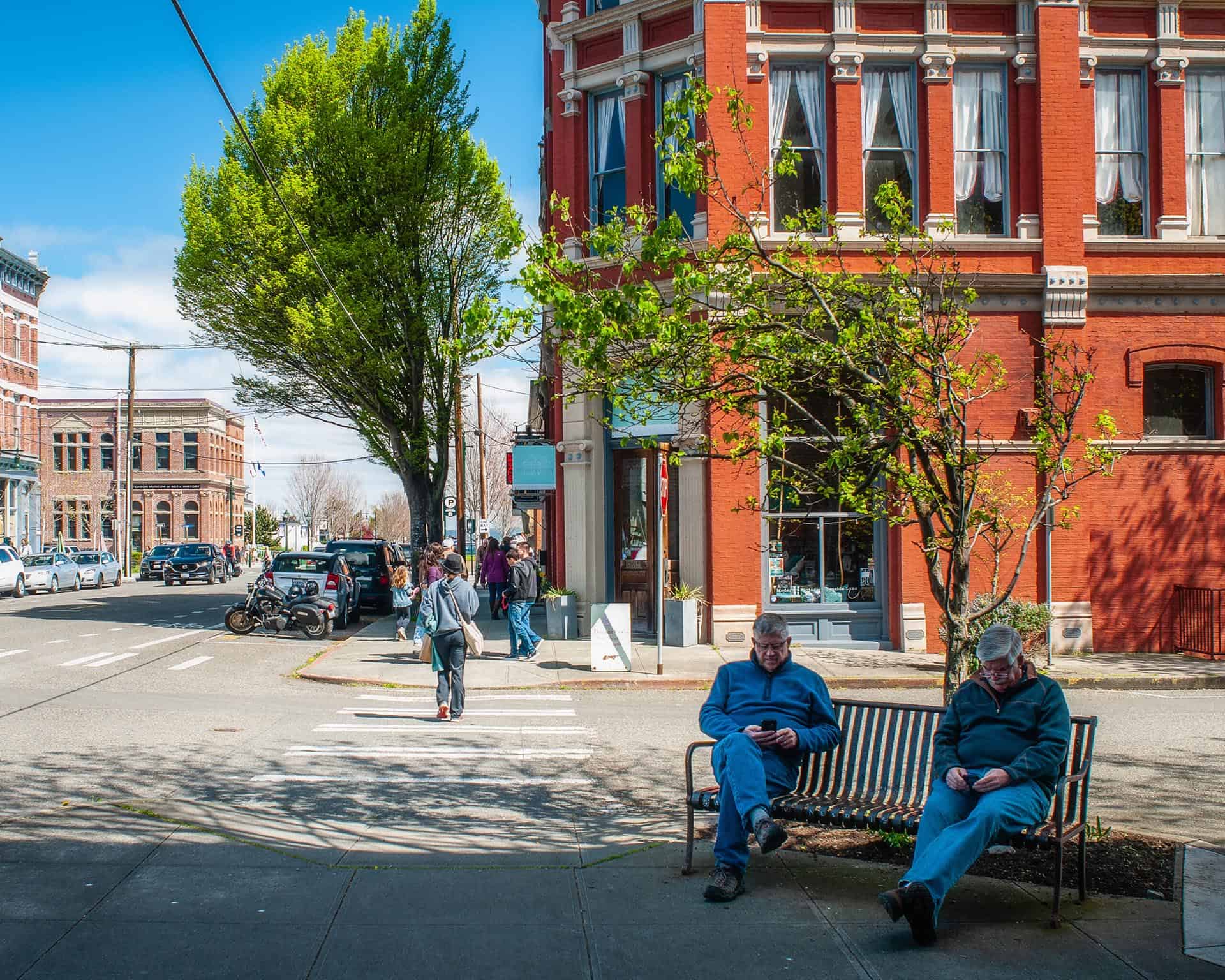
Weblog written by Catie Gould and Ron Davis, initially posted right here by Sightline Institute and is reposted right here with permission.
Parking reform unlocks extra properties and nice neighborhoods, whereas chopping pink tape and extra asphalt, sprawl, and air pollution.
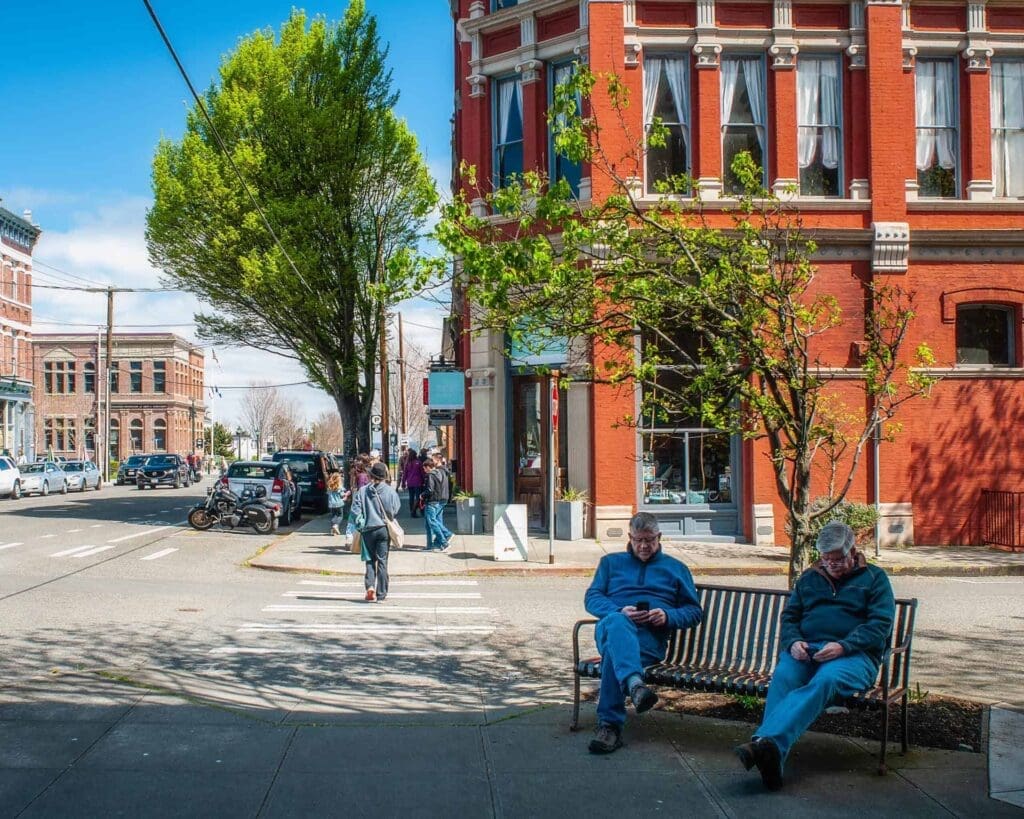
Cities, cities, and jurisdictions all over the world are adopting a robust reform that accelerates homebuilding, eliminates pink tape for small companies, reduces air pollution and sprawl, revitalizes downtowns, and streamlines allowing—at zero price to the taxpayer.
That reform? Eliminating parking mandates—native governments’ arcane and unfounded necessities that each new dwelling or enterprise include an arbitrary, pre-determined variety of parking areas. These necessities hamstring native builders and enterprise homeowners, drive up rents and residential prices, and write sprawl into regulation. It’s time to return these choices to the individuals investing of their communities, whether or not a home-owner, homebuilder, or entrepreneur, who’re greatest positioned to know what number of parking areas they want for his or her dream to succeed.
In Washington state particularly, the legislature is contemplating a invoice to just do that: the Parking Reform and Modernization, SB 5184 (companion invoice HB 1299).
SB 5184 would cap extreme parking mandates each for residential and industrial building, restoring individuals’s skill to resolve for themselves what number of parking spots they want, as an alternative of the ratios some metropolis planner wrote down again in, say, 1963. It could additionally give full parking flexibility to venture varieties that want it most, like repurposing current buildings for cafes or residences and constructing extra center housing and reasonably priced housing, daycares, and extra. (Learn the complete Sightline Institute explainer of the Parking Reform and Modernization Act right here.)
Communities contemplating parking reform for themselves can look to the various different jurisdictions which have already enacted it for a view into what they’ll anticipate in a world with fewer parking mandates, together with:
- Extra properties, in all sizes and styles, from yard cottages and duplexes to residence buildings and reasonably priced housing
- Extra nice neighborhoods, with inventive reuse and preservation of historic buildings, sensible sharing agreements for current parking, and even conversions of parking tons to new communities of properties and retailers
- Much less unneeded asphalt and the air pollution, lethal “warmth islands,” and long-lasting sprawl that include it, paving over close by farmland and open areas
- Much less pink tape and dear delays for builders and metropolis employees alike
- Extra nimble adaptation to fashionable parking-lite conveniences like on-line procuring, distant work choices, and ride-hail apps
- Extra money in native budgets for all the pieces from firefighting to libraries, after-school packages to parks, and different neighborhood priorities
Sound too good to be true? Learn on to study extra in regards to the energy of parking reform.
1. Extra properties of all sizes and styles
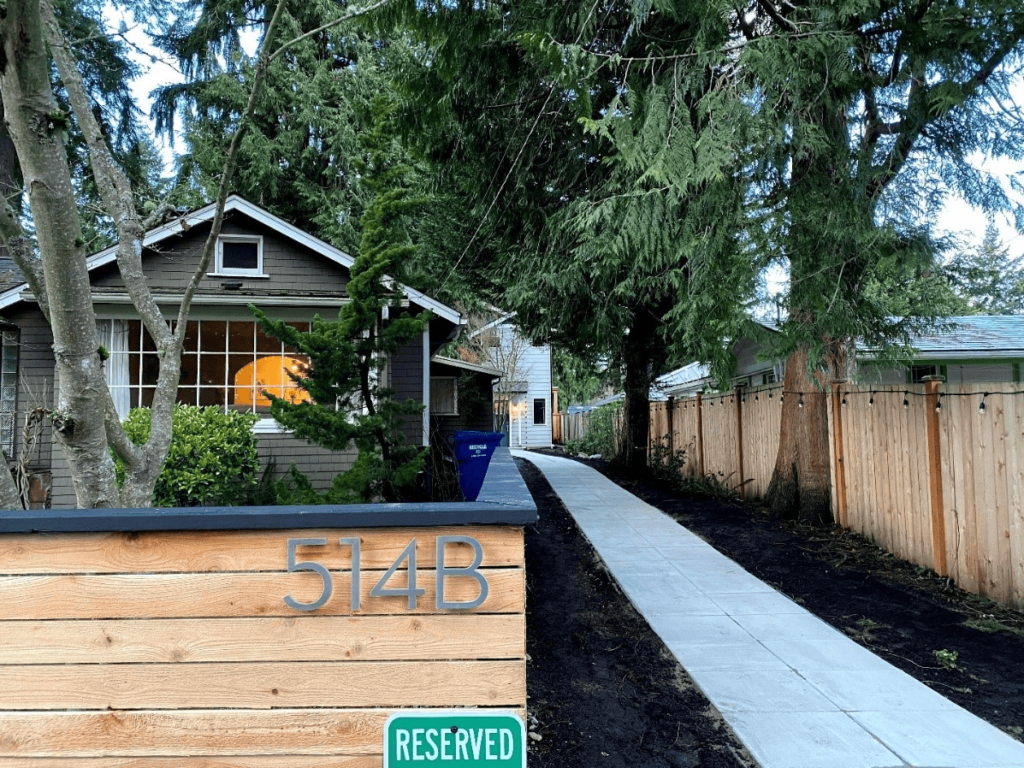
Extra center housing, like yard cottages and fourplexes
Even one parking spot can render a yard cottage unattainable to construct. A research out of Kent, Washington, for instance, discovered that 85 % of residential properties didn’t have room so as to add an extra parking area that native guidelines mandated homeowners to have in the event that they wished to construct a yard cottage.
In 2023, Washington legalized accent dwellings together with different center housing choices like fourplexes. However until the property is close to a significant transit cease, owners nonetheless have to satisfy native parking mandates, whether or not or not they need or want the parking.
Since neighboring Oregon applied its sweeping parking reforms in 2023, center housing is sprouting up that will not have been attainable below prior parking guidelines. One venture, Grant Avenue Develop Properties, in Eugene, Oregon, was ready so as to add 4 yard properties with out demolishing the present main home solely as a result of no off-street parking was required. The brand new properties are actually promoting for $96,000 every to certified patrons.

The Grant Avenue Develop Properties are removed from outliers within the Beaver State. In Portland, 79 % of properties permitted for the reason that 2021 center housing reform kicked in opted to not add off-street parking, together with the overwhelming majority of fourplexes. This implies much more of the modest-sized properties Portlanders need and want may come in the marketplace and take advantage of the area out there to construct. Washington’s SB 5184’s full parking flexibility for residences below 1,200 sq. ft would free typical center housing properties from the mandates that will in any other case forestall them from ever current.
Extra properties match into residence buildings
Condo buildings are an necessary ingredient for cities so as to add the number of sizes and value factors residents want. And whereas most individuals would possibly suppose that native top or density limits dictate the variety of properties permitted in a brand new residence constructing, it’s regularly arbitrary parking mandates.
For instance, a car parking zone with capability for 10 autos may legally assist an residence constructing of 20 properties in Washington’s capital metropolis of Olympia, which requires 0.5 areas per multifamily dwelling. That very same 10-spot car parking zone in Seattle-adjacent Mercer Island, although, which requires 2 parking spots apiece, would solely assist a constructing of 5 properties. Each cities have an residence constructing with a car parking zone for 10 autos; however one metropolis is getting way more bang for its apartment-building buck due to a decrease parking-space-to-home ratio.
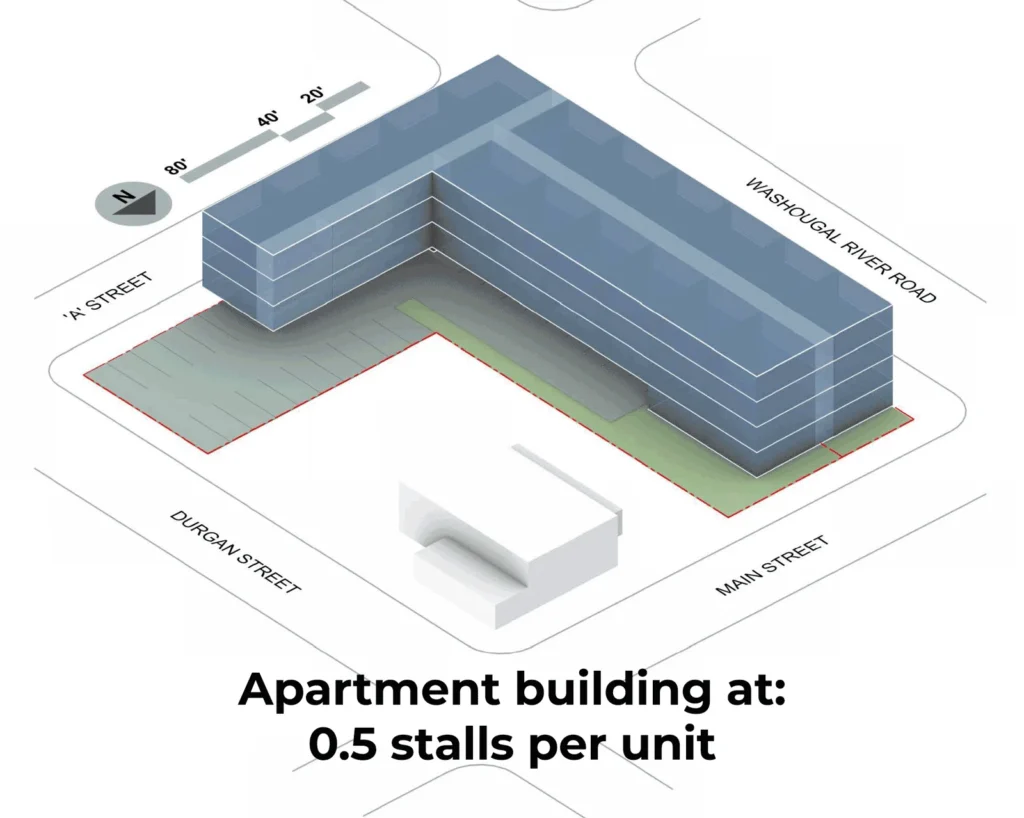
As soon as untethered from pre-determined parking ratios, residence builders regularly select to construct extra properties than they might have in any other case. From Beaverton, Oregon, to Bellingham, Washington, when cities cease micro-managing parking counts, their communities get extra housing. Certainly, research of multifamily housing constructed post-parking reform in Seattle and in Buffalo, New York, each discovered that the vast majority of new properties would have been unlawful below the prior parking minimums, regardless that most new buildings nonetheless included some parking.
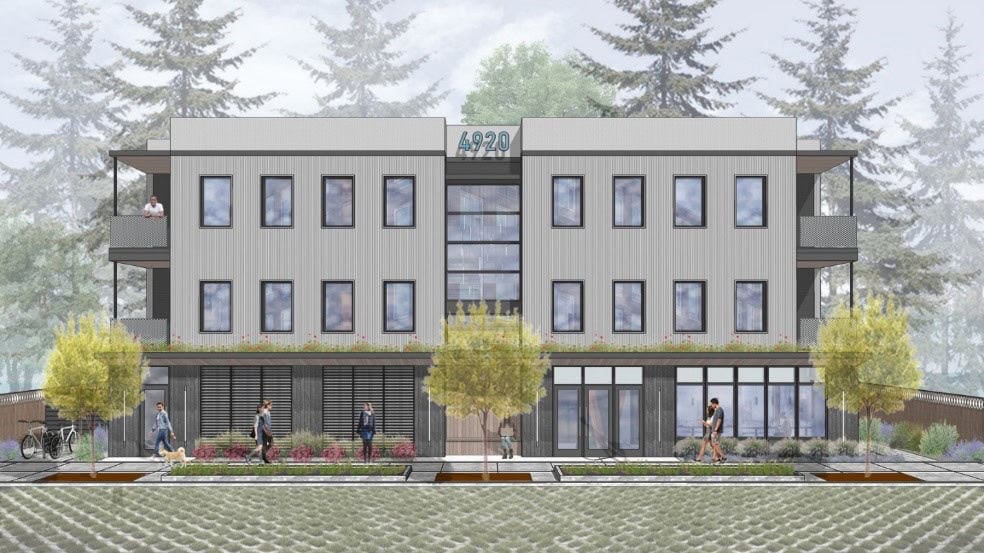
Decrease dwelling prices and rents
Relying on the price of land and the kind of parking construction, a single parking area can price wherever from $5,000 to $60,000. The prices of a latest Sound Transit1 parking storage’s areas ballooned to $200,000 every. These prices get rolled into the price of each venture and product they’re connected to.
For residential initiatives, they’ll add tons of of {dollars} to somebody’s lease. Even when landlords cost a nominal price for parking spots, they nonetheless lose a median of $246 monthly per residence, in response to a Sightline research of 23 multifamily Seattle-area buildings. These prices get handed all the way down to all tenants, whether or not or not they personal a automotive they should retailer.
That research is now ten years outdated, too, which means that determine is unquestionably increased right now. One other evaluation from that very same time interval that averaged prices throughout quite a few US cities discovered one parking spot added a month-to-month common of $225 to the price of lease.
Extra backed reasonably priced housing
It’s no shock that Washington’s biggest scarcity of properties is of these which are reasonably priced to individuals on the lowest earnings ranges. This demographic—together with seniors and folks with disabilities—can also be much less more likely to personal a automotive.
Reasonably priced housing suppliers are sometimes on the entrance strains of the combat in opposition to overbuilding parking. Too typically, they expertise the steep prices and delays of getting to request zoning variances to allow them to keep away from losing cash and area on parking their residents don’t want. Uncertainty round how a lot parking a given metropolis or city would possibly in the end require can delay the development of reasonably priced properties. Extreme parking mandates additionally give leverage to activists bent on conserving reasonably priced housing out of their neighborhoods.

Bonus: Parking reform unlocks far more new properties than different (additionally good) reforms
An evaluation from Colorado confirmed that in contrast with the established order, lowering mandates to 0.5 parking areas per dwelling close to transit, and 1 area per dwelling in all places else would lead to 41 % extra properties changing into financially possible to construct. That one coverage change made an even bigger distinction for housing than legalizing yard cottages (+22 %) and permitting bigger buildings close to transit (+13 %) mixed.
The rise in potential properties was primarily pushed by already-feasible multifamily buildings rising the variety of residences past what current parking ratios would have allowed.
2. Extra nice neighborhoods
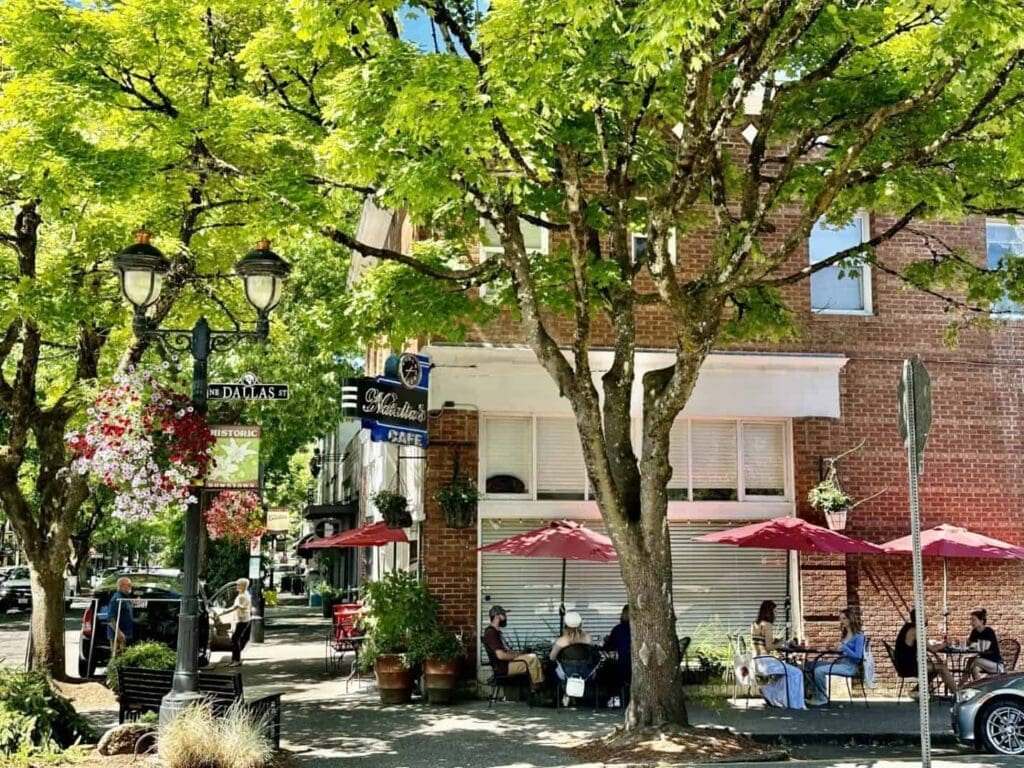
Extra stunning neighborhoods
Consider essentially the most fascinating neighborhood of your metropolis, the one you’d like to reside in in case you may afford it. What do you see? Possibly slim streets, massive timber that shade the sidewalk, outdated homes with a lot of historic character, possibly with a espresso store on the nook.
What don’t you envision? Giant parking tons.
Usually our most sought-after actual property is enticing and helpful as a result of it was constructed earlier than parking mandates existed. In typical Washington cities, a lot of the constructing inventory from the Nineteen Fifties or earlier wouldn’t have sufficient parking to satisfy right now’s necessities. Eliminating parking mandates permits new buildings to raised match the character of older buildings and protect the kind of neighborhoods that many individuals already love.
Extra inventive reuse of historic buildings
Vacant buildings can come again to life when homeowners get to resolve for themselves if the location’s current parking is ample. That was the first motive that Fayetteville, Arkansas, eliminated parking minimums for all industrial buildings. And it labored.
“The buildings I had recognized as being perpetually and maybe completely unusable have been in a short time bought, redeveloped, and are in use proper now,” metropolis planner Quin Thompson instructed Sightline. Laws like Washington’s Parking Reform and Modernization Act, SB 5184, would equally permit all current buildings to seek out new lives with out being hamstrung by parking mandates.

Good sharing preparations to raised use current parking tons
There are way more environment friendly and cheaper methods to supply prospects and tenants with the parking they want than requiring each constructing to have its personal personal car parking zone. A enterprise proprietor with extra parking can lease out their additional areas to a enterprise subsequent door.
For instance, commercial-to-residential constructing conversions in downtown Hartford, Connecticut, use close by parking garages to supply off-street parking for tenants who need it (and spare that price for tenants who don’t). Since many workplace staff have gone distant, there’s a glut of such parking out there.
Extra conversions of parking tons we don’t have to buildings we do
With out parking mandates, area occupied by empty asphalt might be repurposed into much-needed new properties, providers, or companies. Seabrook, New Hampshire, was capable of add a regional bus station within the car parking zone of a former large field retailer after the city eliminated parking mandates. And Woburn, Massachusetts, gave an outdated mall property new life when it swapped its sea of parking for a neighborhood made up of residences, retailers, and sure, nonetheless some parking (earlier than and after aerial pictures beneath).

Wish to remodel an outdated strip mall right into a walkable neighborhood with companies and housing combined collectively? Parking reform is one of many essential substances to make it work. In Olympia, Washington, the Capital Mall is one such web site that the town would love to rework into an actual neighborhood. However the mall is in actual fact outlined as “underparked,” which means it’s tons of of parking areas quick of assembly what present zoning guidelines would mandate. A penstroke change to these guidelines may open up all types of prospects for native entrepreneurs and homebuilders.
3. Much less unneeded asphalt, sprawl, and air pollution
Much less overbuilding of parking, above automotive possession ranges
Cities and counties require extra parking than many individuals want. A Sightline research of jurisdictions throughout Washington state discovered that whereas one among each 4 home-owner households owns one or no vehicles, indifferent properties are almost universally required (91 % of jurisdictions) to have two parking areas every.
Extreme parking mandates are much more out of line with the wants of renters. 58 % of Washington renter households personal one or no vehicles, however even for a studio residence—during which tenants forgo a bed room to economize on lease—most cities nonetheless mandate that they arrive with parking. In actual fact, six out of ten jurisdictions require a couple of parking area for a studio, and two out of ten require two spots apiece. These guidelines mandate overbuilding parking for almost all of renters, and that costly-to-build parking, in flip, needlessly raises their lease.
Much less of parking tons’ long-lasting sprawl and air pollution
Permitting buildings to find nearer to 1 one other, relatively than throughout a sea of parking or busy roads to accommodate parking mandates, means much less creep into neighboring farmland and nature. The area consumed by mandated parking spreads buildings aside, which will increase sprawl, stormwater runoff, site visitors, air pollution, and commute occasions. Sprawl and runoff from tailpipe emissions and automotive tire deterioration additionally stress watersheds, the ecosystem providers they supply, and the wildlife they shelter.
What’s extra, as soon as constructed, these parking tons don’t go away in a single day. Except redeveloped, they lock in these impacts for many years, in addition to the much less tangible normalizing for native residents to anticipate to drive in all places they should go. Even in city environments like San Francisco, analysis making use of randomized housing lotteries has proven that extra parking leads to elevated automotive possession and extra driving.
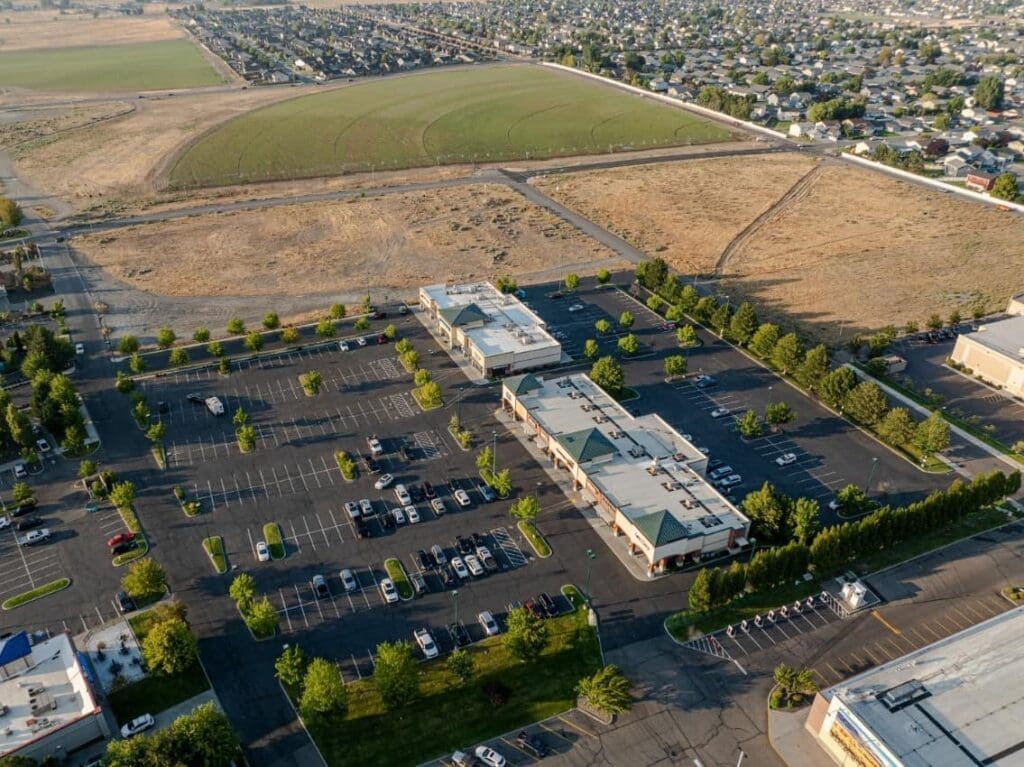
Much less “warmth island” impact in our already warming communities
Parking reform would imply that we cease mandating “warmth islands” in our communities. Giant asphalt parking tons take in the solar’s vitality in the course of the day and launch it again at night time. Throughout heatwaves, which have gotten extra frequent as local weather change warms the planet, excessive in a single day temperatures develop into deadly, as persons are unable to get better from warmth stress. Planting timber will help some, however lowering pavement within the first place will get on the root of the issue. (Be aware, too: Timber don’t thrive in parking tons the place their roots are in soil that’s compacted and sizzling.)
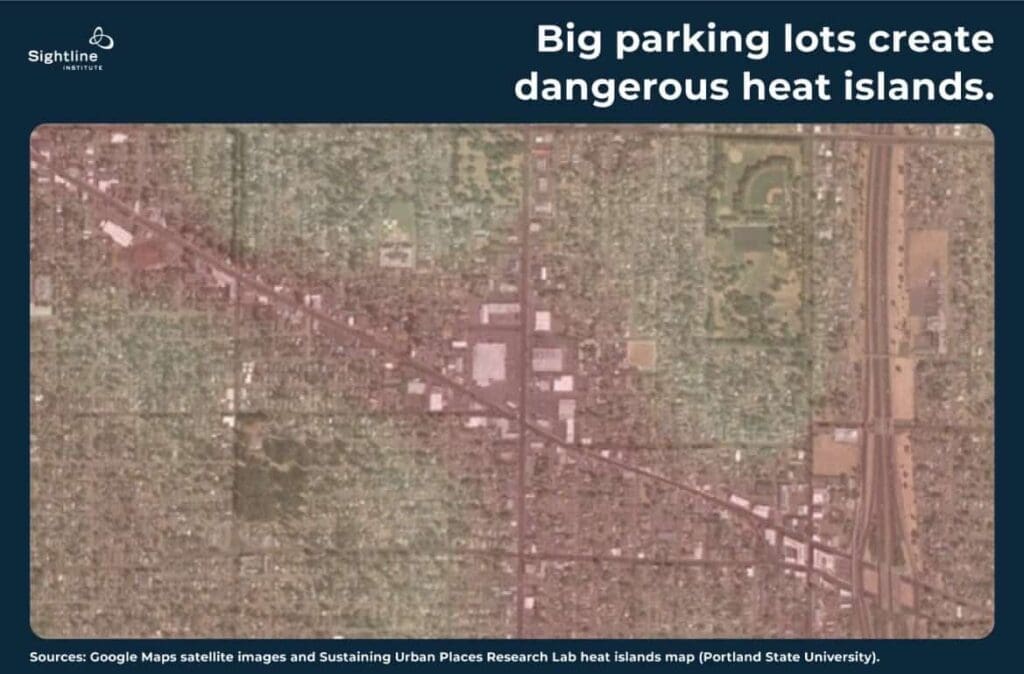
One evaluation of a warmth island in Portland, Oregon, discovered that it was concentrated round a industrial space that had 3 parking spots for each 1,000 sq. ft of business area. At that ratio, parking tons are roughly the identical dimension because the buildings they serve. (Three parking spots per 1,000 sq. ft is a frequent parking minimal for companies in Washington state.)
Decreased parking mandates can permit these massive parking tons to fill in with buildings that break up the pavement and supply shade, whereas additionally offering new retailers and providers a neighborhood would possibly want.
4. Much less pink tape for native companies and governments alike
Parking wants are site- and project-specific
Parking is at all times a hyperlocal query, specific to a venture’s web site, context, and use. The individuals investing of their communities, whether or not a home-owner, homebuilder, or entrepreneur, are greatest positioned to know what number of areas they want for his or her dream to succeed.
Dana Christiansen was shocked when she tried to open a brand new daycare within the “daycare desert”-designated Clark County, Washington, that she must construct 32 parking areas for the variety of households she hoped to serve—far more than what she wished. Her current daycare in Vancouver, Washington, ran high quality with simply 8. Her lived expertise couldn’t compete with native rules, although, and when the property may solely match 29 parking areas, she was pressured to stroll away from the venture.
Mountains of parking paperwork don’t serve anybody
Once they don’t have to barter over parking areas or apply for a zoning variance, builders save money and time—and so do native governments. Growth initiatives that fall in need of required parking can typically win approval however solely after conquering a headache-inducing mountain of paperwork and typically committee and public conferences, too.
That was the case for the homeowners of a brewery in Anchorage, Alaska. The earlier proprietor had added a eating room to the constructing with out including the parking that native guidelines required, so the town threatened to shut the addition. To defend their enterprise, the brand new homeowners needed to conduct a two-week parking research to show what they already knew: the car parking zone hardly ever received full. The town ultimately authorized the parking discount, however everybody misplaced money and time over six measly parking areas.
Parking mandates are an outdated concept, extensively adopted within the Nineteen Fifties or Nineteen Sixties. That was earlier than the web, on-line procuring, work-from-home preparations, or ride-hail apps. Demand for parking modifications, however zoning codes get caught prior to now.
Even superstores like Walmart are constructing much less parking than they used to because of the rise of on-line procuring and often ask native governments to construct much less parking than code requires. As traits proceed in methods foreseen and never, it makes most sense to depart the parking choices to these closest to their prospects’ altering wants and preferences.
It’s a win-win for native budgets
When parking reform makes attainable much-needed dwelling building and helps space companies, it’s a lift to native economies, and at no expense to taxpayers. In actual fact, native governments are more likely to see property tax income enhance as extra properties and companies develop into attainable due to commonsense parking reforms. An evaluation of parking tons in Hartford, Connecticut, estimated that the town was shedding out on $1,200 a 12 months of potential property taxes per off-street parking area downtown.
And sure, we’ll nonetheless have loads of parking…
Parking will nonetheless get constructed. Sorry to disappoint the de-pavers of the world, however the overbuilt parking we’ve right now isn’t disappearing tomorrow, and as communities develop and add extra properties and companies, additionally they add some parking, even when it’s lower than it could have been with parking mandates.
Cities hardly ever proceed to depend parking spots as soon as they aren’t required to, however rising Edmonton, Alberta, which formally repealed parking minimums in June 2020, nonetheless added 20,000 parking areas by means of 2020 and 2021. Even in transit-rich Seattle, after builders obtained full flexibility in some elements of the town in 2012, they nonetheless voluntarily constructed greater than 26,000 new parking areas for brand new housing initiatives.
That mentioned, as lifting parking mandates permits for extra versatile, real-time, and project-specific choices over time—all taking place alongside different modifications like extra public transit deployment, safe-streets measures that spur extra individuals strolling, rolling, and biking, and continued technological developments that may scale back the necessity for automotive journey—we needn’t anticipate a world that solely ever builds extra parking. We simply have to let our cities and cities, and the hundreds of native builders and entrepreneurs who name these locations dwelling, resolve what’s proper for them as they form their communities’ future.
We’ll simply have extra of the great things, too
The advantages of parking reform are many: extra of the properties we’d like, extra of the neighborhoods we love, much less extra pavement, air pollution, and sprawl, and fewer pink tape. It means letting enterprise homeowners and builders, owners and renters, resolve the quantity of parking that’s proper for them and discover choices that go well with their wants and budgets. It means getting sensible with the loads of parking we’ve already constructed into our predominant streets and neighborhoods relatively than prescribing much more unpleasant asphalt as our communities develop.
In brief, eliminating parking mandates doesn’t make parking disappear, however it does present extra selection about how a lot to supply and make higher use of the parking we have already got. Parking areas will nonetheless get constructed, however so will daycares, properties, and ice cream retailers, too.
Concerning the Authors
Catie Gould (pronounced “Go͝outdated”) is a senior transportation researcher for Sightline Institute, specializing in parking coverage.
Ron Davis is a contributor with Sightline Institute serving to to construct coalitions for reasonably priced, equitable, sustainable cities and cities in Washington state.
About Sightline
Sightline Institute is an impartial, nonpartisan, nonprofit suppose tank offering main unique evaluation of democracy, forests, vitality, and housing coverage within the Pacific Northwest, Alaska, British Columbia, and past.